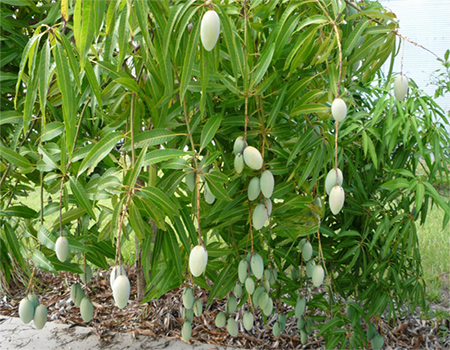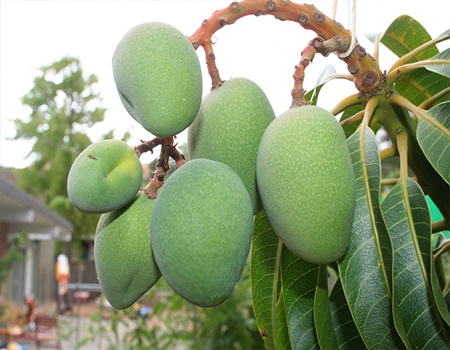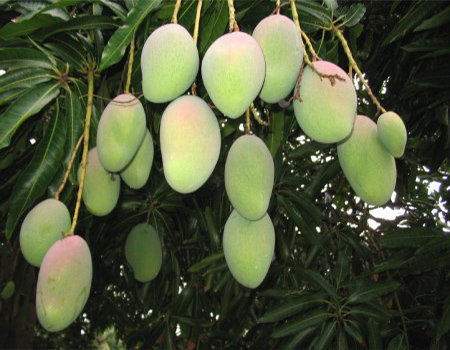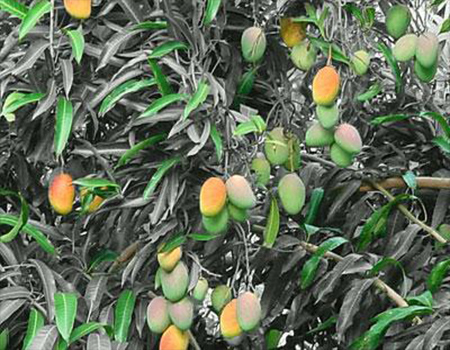The mango is a fleshy fruit also known as kings of fruit. It is recognized and honored by the Government of India as the National Fruit of India[1]. It is also the National Fruit of Philippines and Pakistan. The English word "mango" originated from the Tamil word ma?gai or mankay.Mangoes were first imported to the American colonies in the 17th century; they had to be pickled due to lack of refrigeration.
Mango trees (Mangiferaindica L.) grow up to 115-130 ft tall, with a crown radius of 33 ft. In deep soil, the taproot descends to a depth of 20 ft, with profuse, wide-spreading feeder roots; the tree also sends down many anchor roots, which penetrate several feet of soil. The leaves are evergreen, alternate, simple, 15 - 35 cm (5.9 - 14 in) long and 6 - 16 cm (2.4 - 6.3 in) broad; when the leaves are young they are orange-pink, rapidly changing to a dark, glossy red, then dark green as they mature. The flowers are produced in terminal panicles 10 - 40 cm (3.9 - 16 in) long; each flower is small and white with five petals 5 - 10 mm (0.20 - 0.39 in) long, with a mild, sweet odor suggestive of lily of the valley. The fruit takes three to six months to ripen.
Nutritional value :
| Nutritional value per 100 g | |
| Energy | 250 kJ (60 kcal) |
| Carbohydrates | 15 g |
| - Sugars | 13.7 g |
| - Dietary fiber | 1.6 g |
| Fat | 0.38 g |
| Protein | 0.82 g |
The energy value per 100 g is 60 kcal.and that of the apple mango is slightly higher (79 kcal per 100g). Mango contains a variety of phytochemicals and nutrients. The fruit pulp is high in prebioticdietary fiber, vitamin C, diverse polyphones and provitamin Acarotenoids.
Generally, ripe mangoes have an orange-yellow or reddish peel and are juicy for eating, while exported fruit are often picked while under ripe with green peels. Although producing ethylene while ripening, unripened exported mangoes do not have the same juiciness or flavor as fresh fruit.
Diseases and Disorders
- Abnormal ripening is due to Incorrect O2:CO2 ratios in storage or fruit waxing.
- Black tip is because of Post-harvest disorder of unknown cause
- Brushing damage Excessive post-harvest brush polishing of fruit Bunchy top Unknown cause
- Chilling injury Temperatures from 7-13°C; cultivar dependent.
- Edema is associated with Physiological water stress
- Hot water scald Excessive temperature or duration in hot water or hot water/fungicide dips
- Impact damage Fruit injury from mishandling during harvest or grading
- Internal necrosis Boron deficiency
- Lenticel spotting Heavy rains or prolonged post-harvest dips
- Little leaf Zinc deficiency
- Manganese deficiency Insufficient manganese
| Before | After |
|---|---|
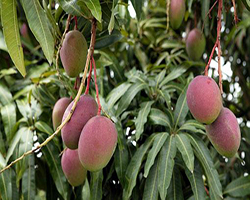 |
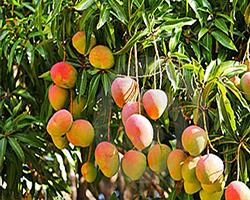 |
 Contact Us:
Contact Us: 
